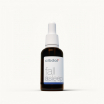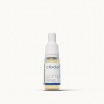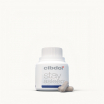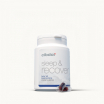What is the 90 minute sleep strategy?
Last updated:
Published:
The 90 minute sleep strategy is a way to align your sleep cycles with your circadian rhythm to help improve sleep quality and energy levels. It involves timing your sleep and wake times around 90 minute cycles, which correspond to the different stages of sleep your body naturally goes through at night.
Contents:
- How the 90 Minute Sleep Cycle Works
- The Basis of the 90 Minute Sleep Strategy
- How to Implement the 90 Minute Sleep Strategy
- The Potential Benefits of the 90 Minute Sleep Strategy
- Tips for Success with the 90 Minute Sleep Strategy
- Potential Drawbacks of the 90 Minute Sleep Strategy
- Who May Benefit Most from the 90 Minute Sleep Strategy?
- Incorporating Other Sleep Optimization Strategies
- The Bottom Line on the 90 Minute Sleep Strategy
-
Frequently Asked Questions
- How long should I sleep if following the 90 minute strategy?
- Can I take 30 minute naps?
- What if I don't wake up at the end of a 90 minute cycle?
- Can I adjust my sleep times daily?
- Will this work if my partner has a different sleep schedule?
- I have young kids and can't stick to a rigid routine - will it still help?
- Is there an ideal nap time if following this strategy?
- Can I drink coffee before a 20 minute power nap?
- How long does it take to see benefits?
- Conclusion
- Resources used to write this article

How the 90 Minute Sleep Cycle Works
During a normal night's sleep, our bodies go through repeated 90-120 minute cycles of the different sleep stages - light sleep, deep sleep, and REM (rapid eye movement) sleep. Each stage plays an important restorative role.
The cycles work as follows:
- Stage 1 Light Sleep - Lasts around 5-10 minutes. This transitions you from wakefulness to sleep. Brain activity and eye movements slow down as your muscles relax.
- Stage 2 Light Sleep - Lasts around 10-25 minutes. This is a period of light sleep before you enter deeper sleep. Your body temperature drops and heart rate slows as you become disengaged from your surroundings.
- Stages 3 and 4 Deep Sleep - Lasts approximately 20-40 minutes. This is the most restorative part of sleep when your body repairs itself and builds energy for the next day. Breathing and heart rate reach their lowest levels.
- REM Sleep - Lasts around 90-120 minutes initially, increasing in length later in the night. This is when dreaming occurs and information is processed and stored in your long-term memory. Your arms and legs are temporarily paralyzed.
As the night goes on, the cycles repeat, with REM periods getting longer and deep sleep stages getting shorter. The whole cycle lasts around 90 minutes.
Aligning your sleep and wake times with these cycles can enhance the restorative benefits of sleep.
The Basis of the 90 Minute Sleep Strategy
The 90 minute sleep strategy is based on the concept that you can hack your circadian rhythm to maximize energy and alertness by timing sleep and wake periods around your body's natural 90 minute sleep cycles.
The strategy was popularized by productivity consultant Nick Littlehales and implemented by elite athletes like Cristiano Ronaldo to optimize sleep and performance. It aims to:
- Avoid interrupting deep sleep stages
- Maximize time spent in restorative REM sleep
- Wake up at the end of a 90 minute sleep cycle so you feel refreshed
This is said to reduce grogginess upon waking and improve sleep quality and daytime energy levels.
The basics of the strategy involve:
- Going to bed and waking up at times divisible by 90 minutes (eg. 11:30pm, 1:00am, 2:30am etc)
- Taking short 20 minute naps during the day, ideally also spaced 90 minutes apart
The idea is to sync your sleep patterns with your body's natural rhythms so you avoid restless wake ups and maximize time in rejuvenating sleep.
How to Implement the 90 Minute Sleep Strategy
Putting the 90 minute sleep strategy into practice involves calculating your ideal bedtime and wake time based on 90 minute increments and adjusting your daily schedule accordingly. Here are some tips:
Determine your minimum and maximum sleep needs
Most adults need 7-9 hours of sleep per night. Determine your personal sweet spot so you know the minimum and maximum sleep durations that work for your body.
Count backwards in 90 minute increments for ideal bedtime
Start counting back from the time you need to wake up in 90 minute segments to find your ideal bedtime. For example, if you need to be up at 7am and need 7.5 hours of sleep, go to bed at 11:30pm.
Adjust bedtime gradually
It may take time to adjust your natural circadian rhythms, so gradually bring forward/push back your bedtime by 15 minute increments until you reach your optimal 90 minute aligned time.
Wake up at the end of a 90 minute cycle
Use an alarm clock to wake up at the end of your final 90 minute sleep cycle. So at 7.5 hours, that would be 7am. At 9 hours, that would be 8:30am. This prevents waking up during deep sleep which causes grogginess.
Take 20 minute power naps
Take short 20 minute naps during the day, preferably also timed at 90 minute intervals from when you woke up. E.g. nap at 10:30am if you got up at 7am. The short duration prevents you entering deep sleep.
Avoid sleeping in on weekends
Try to keep your wake time fixed on weekends to maintain your natural sleep-wake cycle. If needing to catch up on lost sleep, opt for a daytime nap.
Ensure proper sleep hygiene
Follow good sleep hygiene like limiting blue light exposure at night, keeping the bedroom cool and dark, avoiding caffeine late in the day etc to ensure you can fall asleep and stay asleep during your targeted sleep times.
The Potential Benefits of the 90 Minute Sleep Strategy
Aligning sleep and wake times with the body's natural circadian rhythms may provide a range of potential benefits:
- Increased energy - Waking at the end of a 90 minute cycle when sleep is light can boost energy levels in the morning.
- Improved mood - Syncing with your body's natural sleep hormones can enhance mood and reduce anxiety and irritability.
- Better sleep quality - Avoiding disruptions to deep sleep may lead to more restorative rest at night.
- Enhanced cognitive function - Getting sufficient REM sleep is thought to boost learning, focus and memory.
- Better athletic performance - Studies show proper sleep can improve reaction times, motivation and recovery in athletes.
- Increased productivity - More energy and ability to focus during the day can translate to greater efficiency and productivity.
- Reduced daytime sleepiness - The strategy may help minimize daytime fatigue and need for naps.
However, more research is still needed to definitively prove these benefits. Critics also argue that the rigid schedule may cause stress and be impractical for some people. Overall though, optimizing sleep duration and timing can enhance health and performance for most people.
Tips for Success with the 90 Minute Sleep Strategy
Here are some additional tips to help you successfully implement the 90 minute sleep strategy:
- Stick to fixed bed/wake times - Keep a consistent schedule, even on weekends, to sync your body clock.
- Create an optimal sleep environment - Use blackout curtains, a comfortable mattress, ear plugs etc to ensure you fall and stay asleep during your targeted sleep times.
- Have a soothing pre-bed routine - Unwind before bed away from screens with a bath, reading or light stretches to prepare for sleep.
- Avoid sleep disruptors - Steer clear of alcohol, large meals and excessive fluids close to bedtime.
- Use sunrise alarm clocks - Wake up naturally with simulated sunrise alarms or wake up lights.
- Exercise at the right time - Finish workouts at least 2-3 hours before bedtime to allow winding down afterwards.
- Be patient - It can take several weeks to adjust your circadian rhythms, so stick with it.
- Consult an expert - Seek guidance from a sleep physician if you have an underlying condition disturbing your sleep.
Potential Drawbacks of the 90 Minute Sleep Strategy
While it offers many potential upsides, the 90 minute sleep strategy also has some potential downsides to consider:
- It can be difficult to accurately calculate 90 minute cycles and fixed sleep times may cause stress.
- Rigid schedules can be impractical for shift workers, parents of newborns etc.
- Oversleeping by even 15 minutes can disrupt the entire cycle.
- The strategy focuses on duration over sleep quality - factors like noise, light etc also affect sleep cycles.
- Individual needs vary - the ideal strategy depends on age, genetics, health conditions etc.
- Strict timing could potentially cut off needed deep sleep or REM sleep.
- Reduced sleep schedule flexibility and social life freedom.
- Not supported by extensive scientific research yet.
So while it offers intriguing potential benefits, the 90 minute sleep strategy does require commitment and routine. It may not be suitable or practical for every lifestyle. Consulting a sleep specialist can help determine if it's right for you.
Who May Benefit Most from the 90 Minute Sleep Strategy?
While anyone can try it, the 90 minute sleep strategy may provide the most benefits for:
- Athletes and fitness enthusiasts - Optimizing sleep can enhance performance, motivation and recovery.
- Students and academics - Sufficient quality REM sleep boosts learning, memory and test scores.
- Shift and night workers - Precisely timing sleep cycles around work schedules can help improve alertness.
- New parents - Nap scheduling can provide needed rest when night sleep is interrupted.
- Frequent travelers - Managing jet lag and sleep disturbances from timezone changes.
- Busy professionals - More energy and productivity during the workday.
- Entrepreneurs and leaders - Increased focus, mental clarity and workload capacity from better sleep.
- People with sleep disorders - Strategic timing of sleep phases may help with conditions like insomnia.
- Older adults - Deep sleep decreases with age, so optimizing cycles becomes more important.
Again, it depends on your individual needs and sleep issues. Trialling the 90 minute sleep strategy under the guidance of your doctor is the best way to gauge if it can aid your performance and sleep quality.
Incorporating Other Sleep Optimization Strategies
While timing is important, sleep duration and quality matters too. Some other science-backed sleep optimization strategies worth incorporating include:
- Consistent sleep schedule - Keep a regular sleep/wake routine including weekends to set your body clock.
- Daytime exercise - Regular workouts help regulate circadian rhythms and sleep hormones.
- ** Stress management** - Relaxation practices like meditation help lower cortisol levels that disrupt sleep.
- Cognitive behavioral therapy - CBT helps tackle the thoughts and behaviors that perpetuate insomnia.
- Sleep hygiene - Following good sleep environment, diet and lifestyle habits improves sleep ability.
- Light exposure management - Managing light and dark exposure regulates melatonin production.
- Temperature control - A cool bedroom temperature around 65°F (18°C) is optimal for sleep.
- Supplements - Evidence supports supplements like magnesium, glycine, melatonin and CBD oil aiding sleep in some cases.
- Sleep technology - Trackers, apps and wearable devices can provide personalized insights.
For optimal sleep, the 90 minute strategy works best when combined with an overall healthy sleep regimen tailored to your needs and environment. Discuss options with your doctor or sleep specialist.
The Bottom Line on the 90 Minute Sleep Strategy
In summary, the basis of the 90 minute sleep strategy is timing your sleep and wake times around your body's natural 90 minute sleep cycles to help improve sleep quality and daytime energy levels.
For many people, aligning sleep patterns with the body's circadian rhythms in this way can plausibly optimize the restorative stages of sleep and boost cognitive performance.
However, the rigid schedule may be challenging to maintain for some. More flexibility may be required based on lifestyle factors and individual differences. Critics also argue there is limited clinical evidence so far proving definitive benefits.
Overall, while the 90 minute sleep strategy shows promise, working with your healthcare provider to develop a personalized sleep regimen based on your needs, environment and any underlying conditions is recommended to determine if and how this approach could aid your sleep and health.
Frequently Asked Questions
How long should I sleep if following the 90 minute strategy?
Most adults need 7-9 hours of sleep per night for optimal health and performance. Calculate your ideal sleep duration within this range based on how you feel in terms of energy, focus and mood the next day.
Can I take 30 minute naps?
The recommended nap duration is 20 minutes to avoid entering deeper sleep stages. However, some people report better results from 30 minute naps. Experiment to see what works best for you.
What if I don't wake up at the end of a 90 minute cycle?
Set an alarm to wake up at the end of your final 90-minute cycle. If you wake up in between cycles, stay in bed and try to go back to sleep until your alarm goes off.
Can I adjust my sleep times daily?
It's best to keep consistent sleep and wake times to properly sync your circadian rhythm. But some minor daily adjusting within 90 minute increments is possible.
Will this work if my partner has a different sleep schedule?
It can be challenging if your sleep times are not aligned. Try finding a compromise on aligned bedtimes, or use earplugs if your partner is on a different schedule.
I have young kids and can't stick to a rigid routine - will it still help?
Flexibility is definitely required with unpredictable kids! But trying to work within 90 minute increments as much as possible can still optimize sleep cycles.
Is there an ideal nap time if following this strategy?
The most refreshing nap times are generally between 1-3pm or 2-4pm as this aligns with the post-lunch dip in circadian rhythms.
Can I drink coffee before a 20 minute power nap?
It's best to avoid caffeine close to nap times as it can interfere with falling asleep and reduce nap benefits. Have coffee right after the nap.
How long does it take to see benefits?
It usually takes 2-3 weeks of consistency for your body to adjust to the 90 minute routine and start experiencing the full benefits it can provide.
Conclusion
The 90 minute sleep strategy aims to align sleep cycles with your body's natural circadian rhythms to enhance sleep quality and optimize performance. Timing bed and wake times in 90 minute increments may help boost energy, learning, mood and athletic performance by maximizing time spent in restorative sleep stages. However, flexibility from strict schedules may be required for some groups such as shift workers and parents. While promising, more research is still needed on the effectiveness of this approach. Combining the 90 minute sleep strategy with comprehensive healthy sleep habits tailored to your lifestyle provides the best path for sleeping and feeling your best.
Resources used to write this article
Littlehales, N. (2016). Sleep: The myth of 8 hours, the power of naps, and the new plan to recharge your body and mind. Penguin Books.
National Sleep Foundation. (2022). Sleep Cycles and Stages. https://www.sleepfoundation.org/how-sleep-works/sleep-cycles-stages
Watson, S. (2021). Hack your circadian rhythm to have more energy. Medical News Today. https://www.medicalnewstoday.com/articles/hack-your-circadian-rhythm-to-have-more-energy
National Institute of Neurological Disorders and Stroke. (2019). Brain Basics: Understanding Sleep. https://www.ninds.nih.gov/Disorders/Patient-Caregiver-Education/Understanding-Sleep
Harvard Medical School. (2007). Sleep and mental health. Harvard Health Publishing. https://www.health.harvard.edu/newsletter_article/sleep-and-mental-health
Johns Hopkins Medicine. (2022). The Health Benefits of REM Sleep and How to Get More of It. https://www.hopkinsmedicine.org/health/wellness-and-prevention/the-health-benefits-of-rem-sleep-and-how-to-get-more-of-it
Watson, S. (2017). Why do we dream? Medical News Today. https://www.medicalnewstoday.com/articles/318120
Schutte-Rodin, S., Broch, L., Buysse, D., Dorsey, C., & Sateia, M. (2008). Clinical guideline for the evaluation and management of chronic insomnia in adults. Journal of Clinical Sleep Medicine, 4(5), 487–504. https://jcsm.aasm.org/doi/10.5664/jcsm.27286
Czeisler, C. A. (2015). Duration, timing and quality of sleep are each vital for health, performance and safety. Sleep health, 1(1), 5–8. https://doi.org/10.1016/j.sleh.2014.12.008
Watson, S. (2017). How to stop hitting snooze and get up on time. Medical News Today. https://www.medicalnewstoday.com/articles/319632
Dashti, H. S., Scheer, F. A., Jacques, P. F., Lamon-Fava, S., & Ordovás, J. M. (2015). Short sleep duration and dietary intake: epidemiologic evidence, mechanisms, and health implications. Advances in nutrition (Bethesda, Md.), 6(6), 648–659. https://doi.org/10.3945/an.115.008623



















